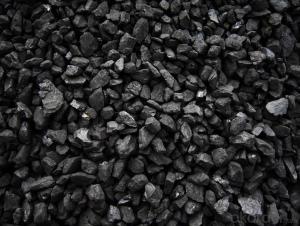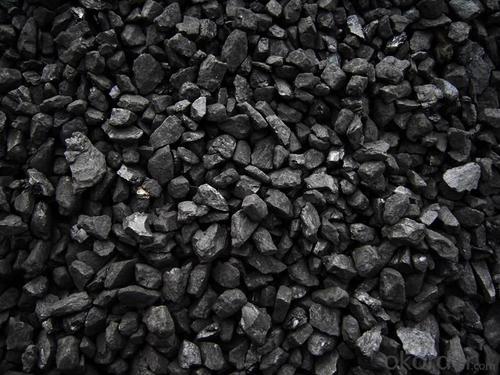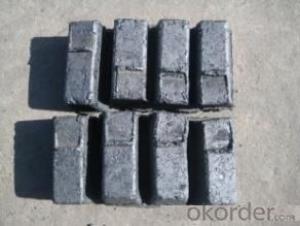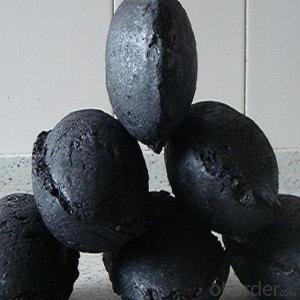High Quality Best Clean Coal Low Price : 6500-6600
- Loading Port:
- Tianjin
- Payment Terms:
- TT OR LC
- Min Order Qty:
- 1000 m.t.
- Supply Capability:
- 20000 m.t./month
OKorder Service Pledge
OKorder Financial Service
You Might Also Like
1.Structure of Anthracite Description
Anthracite is made from Shanxi,the coal capital of the word .The quality is very high due to its unique resource .It has been exported to most of the world ,especially to Japan and Korea,as well as mid east.
It is commonly used in drinking water ,food industry ,chemical /dyeing industry ,sea/salt water filtration ,petro-chemical industry ,pulp/paper industry ,sauna,spa,pool,boiler ,etc.
Advantages:
1. Longer Filter Runs2. Faster Filtration3. Long Lifetime4. Good Separation Characteristics5. Savings water and power in washing6.Removes more iron and manganese salts tration ,petrochemical industry ,pulp /paper industry ,sauna,spa,pool,boiler,etc.
2. Main Features of Anthracite
Fixed Carbon: 78 %
Ash: 18 %
Volatile Matter: 4 %
Sulphur: 1.0 %
Moisture: 11 %
Gross Calorific Value: 6450 Kcal
Size: 0 mm - 19 mm: 90%
3. The Images of Anthracite
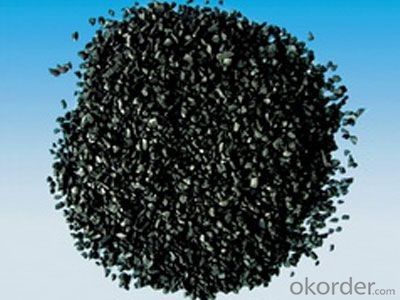
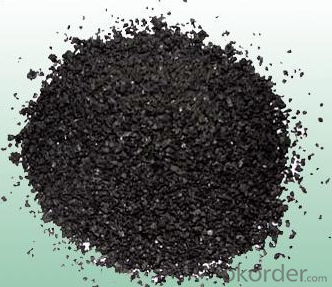
4. The Specification of Anthracite
1. Fixed carbon: 90%min
2.Uniform particles
3.Good separation characteristics
4. Long life
5. Widely used
6.activated anthracite:
7.Certificate: ISO9001, ISO9002, NSF
8.Usage: for water and air purification, etc.
5.FAQ of Anthracite
1). Q: Are you a factory or trading company?
A: We are a factory.
2). Q: Where is your factory located? How can I visit there?
A: Our factory is located in ShanXi, HeNan, China. You are warmly welcomed to visit us!
3). Q: How can I get some samples?
A: Please connect me for samples
4). Q: Can the price be cheaper?
A: Of course, you will be offered a good discount for big amount.
- Q: What is the density of carbon?
- The density of carbon is approximately 2.26 grams per cubic centimeter.
- Q: Excuse me, carbon steel, carbon steel pipe, seamless steel pipe, spiral steel pipe, what is the difference?
- There is no joint in the whole. The material can be used according to the needs, often used for high temperature, high pressure and other fluids. Hence, it is called seamless steel tube. The spiral steel tube is also formed by the heating and rotating of the strip steel. The utility model is suitable for the fluid below 30Kg, and the material can replace the seamless pipe with the big caliber and difficult to be manufactured according to the requirement, and is suitable for the medium and low pressure fluid with large caliber.
- Q: Emerald garden high carbon tempered metal
- 2.1 businessmen in the lower right corner. After 2.2, on an island below. Go and eat the merchant and bring him home. Kill the dragon. Be sure to hurry. The merchant fell off (I don't recommend it). You can also put a red dragon below killed off 2 Dragon eggs. Called red dragon, the businessman to eat, then at home, do not ignore it, he died, a businessman has come out. Get around the enemy base!
- Q: How does carbon impact the stability of savannah ecosystems?
- The stability of savannah ecosystems relies heavily on carbon, which is crucial for all living organisms and involved in various ecological processes. Carbon exists primarily in the form of organic matter, which is vital for the growth and development of plants, the primary producers in these ecosystems. In savannahs, carbon affects stability in multiple ways. Firstly, carbon dioxide (CO2) plays a significant role in regulating the global climate as a key component of the Earth's atmosphere. Savannahs have the ability to sequester and store large amounts of carbon in their vegetation and soils, thereby mitigating climate change by reducing CO2 levels in the atmosphere. Carbon is also essential for plant growth through photosynthesis. Savannah plants, like grasses and scattered trees, utilize carbon dioxide from the air to produce carbohydrates and other organic compounds. This process not only provides plants with energy but also contributes to the overall productivity of the ecosystem. The stability of savannah ecosystems is also dependent on the interaction between plants and animals. Carbon-rich vegetation serves as a food source for herbivores, which in turn support predators. The carbon cycle ensures a continuous flow of energy and nutrients throughout the food web, maintaining ecosystem balance and stability. Moreover, the carbon content in savannah soils affects their fertility and ability to retain moisture. Organic matter derived from decaying plant material improves soil structure, nutrient availability, and water holding capacity. This, in turn, supports vegetation growth and sustains the diverse array of species found in savannah ecosystems. However, human activities such as deforestation, agricultural practices, and the burning of fossil fuels are disrupting the carbon balance in savannahs. Deforestation removes carbon-rich trees and plants, reducing the overall carbon storage capacity of the ecosystem. Additionally, the release of carbon dioxide from burning fossil fuels contributes to the greenhouse effect and climate change, which can disrupt savannah ecosystem stability. In conclusion, carbon plays a critical role in maintaining the stability of savannah ecosystems. It influences climate regulation, supports plant growth, provides energy for the food web, and enhances soil fertility. However, human activities that disrupt the carbon balance in these ecosystems can have detrimental effects on their stability and overall health. Therefore, it is essential to conserve and restore savannah ecosystems to preserve their carbon storage capacity and ensure long-term stability.
- Q: What are carbon nanomaterials?
- Carbon nanomaterials are a class of materials that are composed of carbon atoms arranged in various structures at the nanoscale. These structures can include carbon nanotubes, fullerenes, and graphene. Carbon nanotubes are cylindrical structures made up of rolled-up sheets of graphene, while fullerenes are closed-cage molecules consisting of carbon atoms. Graphene, on the other hand, is a single layer of carbon atoms arranged in a hexagonal lattice. Carbon nanomaterials possess unique properties that make them highly desirable for a wide range of applications. They exhibit exceptional mechanical strength, high electrical and thermal conductivity, as well as excellent chemical stability. These properties arise from the strong covalent bonds between carbon atoms and the unique arrangements of these atoms in the nanoscale structures. Due to their remarkable characteristics, carbon nanomaterials have found numerous applications in various fields. They are used in electronics and computing devices, where their high electrical conductivity and small size make them ideal for creating faster, smaller, and more efficient components. Carbon nanotubes have also been utilized in composite materials to enhance their mechanical strength and durability. Furthermore, carbon nanomaterials have shown promise in the field of medicine and healthcare. They can be used for drug delivery systems, where they can encapsulate and transport drugs to specific targets in the body. Carbon nanomaterials have also been investigated for their antibacterial properties, making them potential candidates for developing antimicrobial coatings and surfaces. Overall, carbon nanomaterials are a diverse class of materials with exceptional properties that have led to numerous exciting applications in various industries. As research continues, their potential uses are likely to expand, revolutionizing fields such as electronics, medicine, and materials science.
- Q: How is carbon used in the production of construction materials?
- Carbon is used in the production of construction materials through a process called carbonization, where organic materials such as wood, coconut shells, or coal are heated to high temperatures in the absence of oxygen. This results in the removal of other elements and the production of carbon-rich materials like activated carbon or charcoal, which can be used in various construction applications such as concrete production, filtration systems, or as a component in composite materials.
- Q: Carbon 60 related information
- The 60 is the solid carbon black, graphite and diamond. In addition, in recent years, scientists have discovered that some exist in new form of elemental carbon, which is more important in 1985 found C60. C60 is a molecule made up of 60 carbon atoms, similar to football. At present, people have made great progress in the research of C60, and the application of C60 in superconductor, material science and other fields is deepening. In our country, great achievements have been made in this field. For example, the metal doped C60 superconductor has been successfully developed in collaboration with the Physics Institute of Peking University and the Chinese Academy of sciences. It can be said that the discovery of C60 is of great importance to the study of carbon chemistry and even the whole field of chemistry.
- Q: What are the economic impacts of carbon emissions?
- The economic impacts of carbon emissions are significant and wide-ranging. Carbon emissions, primarily from the burning of fossil fuels, contribute to climate change and global warming. These changes in the climate have a direct impact on various economic sectors and can lead to both short-term and long-term economic consequences. One of the most notable economic impacts of carbon emissions is the cost of dealing with the effects of climate change. Extreme weather events, such as hurricanes, floods, and droughts, become more frequent and intense as a result of carbon emissions. These events can cause extensive damage to infrastructure, homes, and businesses, leading to significant economic losses. For example, in 2017, the United States experienced a record-breaking hurricane season, with hurricanes Harvey, Irma, and Maria causing an estimated $265 billion in damages. Moreover, carbon emissions also affect agricultural productivity. Climate change alters temperature and precipitation patterns, which can disrupt crop production and decrease yields. This, in turn, affects food prices and availability, impacting both consumers and farmers. Additionally, carbon emissions contribute to the acidification of oceans, which can harm marine ecosystems and disrupt fisheries, leading to economic losses for fishing communities. Furthermore, carbon emissions have implications for public health, which can result in economic burdens. Air pollution caused by carbon emissions can lead to respiratory and cardiovascular illnesses, increasing healthcare costs and reducing workforce productivity. In addition, extreme heatwaves, exacerbated by carbon emissions, can have a detrimental impact on worker productivity and labor capacity, affecting economic output. To mitigate the economic impacts of carbon emissions, many countries have implemented policies and regulations to reduce greenhouse gas emissions. These policies often include carbon pricing mechanisms, such as carbon taxes or cap-and-trade systems, which aim to incentivize the transition to cleaner energy sources and reduce carbon emissions. While these policies may have short-term economic costs, they can also create opportunities for innovation and the development of green technologies, which can lead to long-term economic benefits. In conclusion, the economic impacts of carbon emissions are significant and multifaceted. From the costs of dealing with climate-related disasters to the effects on agriculture, public health, and productivity, carbon emissions have far-reaching consequences. Addressing these impacts through the implementation of effective climate policies is crucial to mitigate the economic risks and foster a sustainable and resilient economy.
- Q: What is the importance of carbon dating in archaeology?
- Carbon dating is crucial in archaeology as it allows us to determine the age of artifacts and remains with remarkable accuracy. By analyzing the levels of carbon-14 isotopes in organic materials, we can establish when they were last alive or in use. This information provides valuable insights into the chronology of human history, enabling archaeologists to reconstruct past civilizations, understand cultural changes, and refine our understanding of the past.
- Q: What about my world carbon board?
- What set is mod? Or pressure version... Say it clearly
Send your message to us
High Quality Best Clean Coal Low Price : 6500-6600
- Loading Port:
- Tianjin
- Payment Terms:
- TT OR LC
- Min Order Qty:
- 1000 m.t.
- Supply Capability:
- 20000 m.t./month
OKorder Service Pledge
OKorder Financial Service
Similar products
Hot products
Hot Searches
